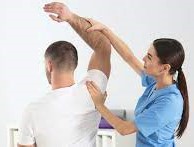To Study the Knowledge and Awareness about the Problems Faced by the Left and Right-Handed Dominant Individuals among Physiotherapy Practitioners and Students
Main Article Content
Abstract
Background: In India, when some children are still compelled to use their right hand, there are also dominances other than right that are increasing. Since modern society is becoming less conservative, the percentage of people being identified as a leftist or an ambidextrous will continue to scale with time. Hence Physiotherapists should know the problems that different dominances face, teach them correct hand ergonomics and efficient writing grips to prevent overuse injuries. Incorrect activities, if continuously performed, may turn into a habit of the future. Physiotherapists must also be aware of the separate devices/tools available for non-right-handed people.
Method: This study included 351 physiotherapy students and practitioners, 328 right and 23 left-handed who were given the “Varying Hand Dominance, Varying Problems” questionnaire. Data was collected over google forms and interpreted via the Instat application.
Result: The study shows that 40.5% of the people feel that they are not well-versed in the concept of dominance (p=0.4664). They were forced to change their dominance (p=0.0029). All left-handed and 73.8% of the right-handed had knowledge about the difficulty in positioning hands during manual therapy techniques which may be pertaining to the dominance of the physiotherapist. (p=0.0001).74% of the left-handed and 92% of the right-handed had pain of varying intensity after prolonged writing (p=0.0108).
Conclusion: This study proves that enforcement of dominance by parents is still prevalent (p=0.0029). Nearly half the population in this study, lacks knowledge about the problems faced by different-handed individuals and are unaware about tools for different hand dominances.
Article Details
References
Annett M. A classification of hand preference by association analysis. British journal of psychology. 1970 Aug;61(3):303-21.
Scharoun SM, Bryden PJ. Hand preference, performance abilities, and hand selection in children. Frontiers in Psychology. 2014 Feb 18;5:82.
Hepper PG, Shahidullah S, White R. Handedness in the human fetus. Neuropsychologia. 1991 Jan 1;29(11):1107-11.
Tan U, Tan M. Incidences of asymmetries for the palmar grasp reflex in neonates and hand preference in adults. Neuroreport. 1999 Nov 8;10(16):3253-6.
Thomas NA, Manning R, Saccone EJ. Left-handers know what’s left is right: Handedness and object affordance. Plos one. 2019 Jul 24;14(7):e0218988.
Jung HS, Jung HS. Hand dominance and hand use behaviour reported in a survey of 2437 Koreans. Ergonomics. 2009 Nov 1;52(11):1362-71.
SHIN H, HAGA S. Ergonomic Appraisal of Everyday Things for Left-handed people EMG, Performance, Subjective Measures. The Japanese Journal of Ergonomics. 2001 Sep 4;37(Supplement):440-1. 28)
Scharoun SM, Bryden PJ. Hand preference, performance abilities, and hand selection in children. Frontiers in Psychology. 2014 Feb 18; 5:82.
Van Strien JW. The Dutch Handedness Questionnaire.
Williamson A, Hoggart B. Pain: a review of three commonly used pain rating scales. Journal of clinical nursing. 2005 Aug; 14(7):798-804.
Kulkarni R, Yadav T. Prevalence of Poor Hand Grip Strength in Dentists. Indian Journal of Public Health Research & Development. 2020 May 1; 11(5).
Zakariya MP, shah, Umama nisar, mohan, Nagarajan, Saad S, Shaikhji NM. Analysis of power grip and pinch grip among health care professionals. International Journal of Physiotherapy. 2016 Feb 1; 3(1):45-52.
Silva EM, Cruz ID, Costa ID, de Lima KC, de Araújo Souza GC, Fuscella MA, de Andrade FB. Left-handed students and clinical practice in dentistry: adaptations, difficulties and realities experienced in the academic environment. Open Journal of Preventive Medicine. 2016;6(11):247
Nwuga VC. Grip strength and grip endurance in physical therapy students. Archives of physical medicine and rehabilitation. 1975 Jul 1; 56(7):297-300.
Nordin NA, Leonard JH, Thye NC. Work-related injuries among physiotherapists in public hospitals: a Southeast Asian picture. Clinics. 2011; 66:373-8.
Callegari B, de Resende MM, da Silva Filho M. Hand rest and wrist support are effective in preventing fatigue during prolonged typing. Journal of Hand Therapy. 2018 Jan 1;31(1):42-51.
Rasyad M, Muslim E. Biomechanical ergonomic evaluation of handwriting performance in left-handed students when using writing armchair. In AIP Conference Proceedings 2019 Dec 10 (Vol. 2193, No. 1, p. 050008). AIP Publishing LLC.
Kathleen Day 2011; 6(10).Left handed knives systems.US20110239471A1
Sahu MR, Kujur A. Differentiation and comparison of left handed and right handed writers on the basis of strokes and slope of letter. International journal of current research and review. 2017; 9:06-9.
Kelly RE. Handedness differences in writing speed and theme length and evaluation (Doctoral dissertation, University of British Columbia).

